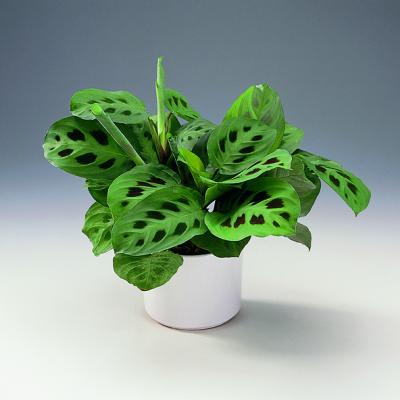Balcony Plants II

Easy To Grow Balcony Plants
5. Philodendron scandens

Philodendrons are erect or climbing plants with tough, glossy leaves. The most popular is Philodendrons scandens, with heart-shaped, dark green leaves, each about 10cm long. Philodendrons hastatum has more elongated, almost triangular leaves. Both grow up to 1.8m and need the support of canes or a sturdy pole. Philodendrons bipinnatifidum has erect stems and spreading, deeply cut leaves; it will grow to about the same total height as the climbers.
Philodendron will live in a bright but not sunny position, or in a lightly shaded spot. The absolute minimum temperature should be 13 degree celsius, but above this it tolerates a wide range. High humidity encourages strong growth. Water the compost moderately, allowing a winer rest period of near-dryness. Provide a weak feed with each watering while the plant is actively growing. Pot on when roots fill the containers, in a mixture of peat and loam.
6. Peperomia magnoliifolia

Peperomia magnoliifolia is a compact plant about 30cm high, with oval, glossy, dark green leaves; there is a variegated form with yellow leaf-markings. Peperomia obtusifolia is similar in its erect, bushy habit, but has purple stems and purplish leaf-margins. Peperomia caperata is a more spreading plant with heart-shaped, heavily textured leaves and tall white flower spikes in summer.
Peperomias thrive in bright light with some mild sunshine. From a winter minimum of 13 degree celsius they tolerate the range of normal room temperatures, but need high humidity if kept warm. Use tepid water to moisten the compost, which should be allowed to dry out partially between waterings. From spring to autumn add a half-strength liquid feed every two weeks. Pot in a peaty, soil-less compost but keep the plants confined. They rarely need repoting and will live happily in a maximum 12.5cm pot.
7. Swiss Cheese Plant ( Monstera Deliciosa )

Always among the ten most popular houseplants, the swiss cheese plant is so called for its huge glossy leaves, deeply cut or perforated from edge to centre. It lasts many years and will grow to a height of 3m, but can even double that size in time. It also has a very broad spread, with mature leaves up to 60cm across, and will need the support of canes or a sturdy pole.

From spring to autumn give the plant indirect light or partial shade and moist conditions. Water and feed it well, keeping the compost moist but not wet. In winter it needs less water and can tolerate full light. Keep leaves dust-free by sponging them gently. Repot the plant every two years in loam compost coarsened with grit or leaf-mould. Top-dress a plant already in a large pot. Aerial roots develop from the plant's main stem; tie them to the stem and train them down into the compost.
8. Maranta (Prayer Plant)

There are several different cultivars of Maranta sold as houseplants. The popular name of Prayer Plant refers to their common habit of folding up their leaves at night. Other names, such as Herringbone Plant or Rabbit's Tracks, indicate the type of leaf markings to be seen. The broad oval leaves, up to 12.5cm long, grow on stalks from a sheathed stem and spread outwards rather than upwards.
Marantas must have warm, moist conditions; maintain a minimum temperature of 18 degree celsius if possible, though 10 degree celsius is just tolerated in winter. Low light is preferred. This is because sunshine fades the leaves. Water generously from spring to autumn, sparingly in winter and supply weak liquid feeds during active growth. Spray or sponge leaves, but do not apply leaf chemicals. Pot on each spring, if necessary, in loam-based compost. The plants have shallow-rooting. Divide large clumps during repotting.







0 Comments:
Post a Comment
<< Home